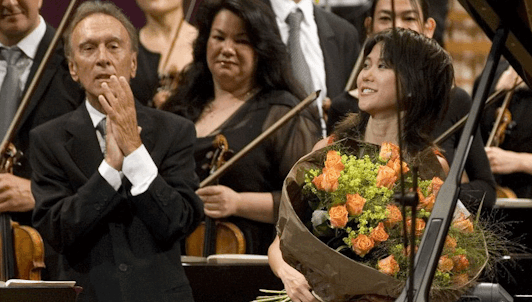At the time that Richard Strauss suggested to his Viennese colleague the idea of writing a piece inspired by Maeterlinck’s eponymous poem, the two composers had not yet heard Debussy’s innovative opera. In this profound symbolist drama, love—forbidden, as in Tristan and Isolde—is quietly proclaimed, and ultimately remains unrequited except in death. A brief introduction presents the work’s principal themes and uses works of the great painters to better communicate the plot.
Following Schoenberg’s work, the Gustav Mahler Youth Orchestra, conducted by its founder Claudio Abbado, performs the Fourth Symphony of the composer who gave their ensemble their name. Bringing together pastoral grace and emotional ambiguity, the work is the culmination of Mahler’s œuvre leading up to that point. The symphony exalts nature and describes the different steps of Creation: earthly forces, flora and fauna, the birth of man, the angels, and finally love. Soprano Juliane Banse crowns the final movement in singing the “joys of the heavenly life” where “we barely hear the tumult of the world!”
